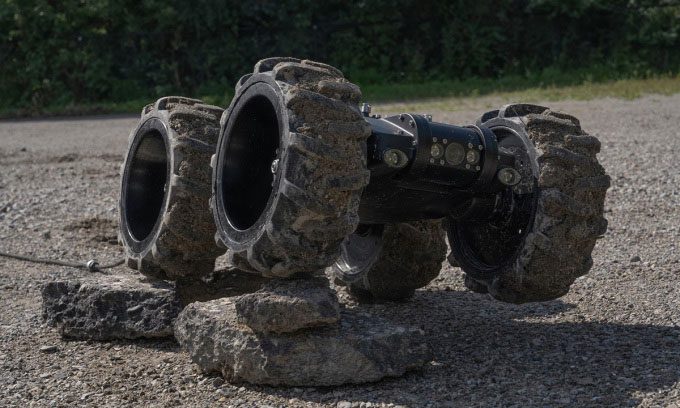Thanks to its four motorized wheels and sturdy rubber tires, the Onyx robot can overcome obstacles to carry out challenging tasks both on land and underwater.
Remotely Operated Vehicles (ROVs) are very useful, but some tasks require operation both underwater and on land. Canadian company Deep Trekker has developed a new autonomous robot named Onyx to meet such demands, as reported by New Atlas on October 24.

Onyx robot overcoming obstacles on land. (Photo: Deep Trekker).
With its four motorized wheels wrapped in terrain-capable rubber tires, Onyx can navigate obstacles both on land and underwater. It can operate on the ground or dive to a maximum depth of 50 meters without leakage. Onyx is wirelessly controlled on land but requires a communication cable when operating underwater.
Users control Onyx through a handheld controller. This controller displays live video from Onyx’s cameras on a built-in 7-inch LCD screen. Onyx is equipped with a 1080p camera that can tilt and pan. In low-light conditions, the camera is supported by four LED lights with a brightness of 1,100 lumens. Users can upgrade to a 4K camera or add additional cameras to the rear and sides of the robot.
Onyx operates on a 232 Wh lithium-ion battery, providing two hours of runtime after a single charge. Additionally, the robot can connect to an external power source.
Measuring 59.9 cm in length, 42.8 cm in width, and 25 cm in height, with a ground clearance of 10 cm and weighing 26.5 kg, the robot has a maximum speed of 1.1 m per second. Depending on the intended use, the robot can be equipped with additional devices such as sonar (acoustic positioning) or LiDAR (laser scanning). The robot can be utilized in scenarios such as disaster response, hazardous material handling, security patrols, mapping, or industrial inspection.


















































